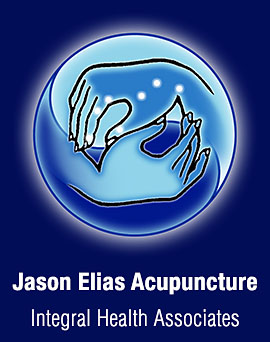WESTERN INTERPRETATION
A chronic disease of the bronchi, the large passages that convey air throughout the lungs, asthma (now referred to as reactive airway disease, or RAD) occurs periodically rather than constantly, and the symptoms vary in frequency, duration, and intensity.
The disease is caused by multiple triggers, which first induce bronchoconstriction and then swelling and inflammation, eventually leading to obstruction of the airways.
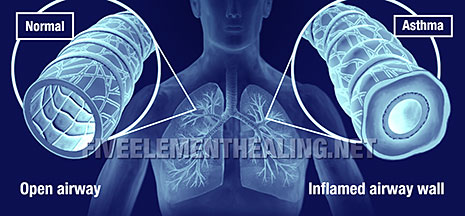 Allergic (atopic) asthma is triggered by an allergic reaction to hay, dust, mold, and other airborne allergies, as well as food and drugs; more than half of asthma cases are allergy related. Allergic asthma typically begins in childhood (approximately one-third of allergic asthma victims are children) and tends to be hereditary; if your parents or grandparents had asthma, you have a greater likelihood to inherit a susceptibility to the disease. Allergy-induced asthma tends to be troublesome in the spring, summer, and fall, when flower and weed pollens abound.
Allergic (atopic) asthma is triggered by an allergic reaction to hay, dust, mold, and other airborne allergies, as well as food and drugs; more than half of asthma cases are allergy related. Allergic asthma typically begins in childhood (approximately one-third of allergic asthma victims are children) and tends to be hereditary; if your parents or grandparents had asthma, you have a greater likelihood to inherit a susceptibility to the disease. Allergy-induced asthma tends to be troublesome in the spring, summer, and fall, when flower and weed pollens abound.
Secondary asthma is caused by chronic and recurrent infections of the bronchi, sinuses, tonsils, or adenoids and may develop because of a hypersensitivity to the bacteria causing the infection.
Factors that contribute to the development of asthma include exposure to irritating chemicals inside and outside the home (pollen, dust, mold, chemical products, house-cleaning agents), cigarette smoke (including secondhand smoke), diets high in sugar and fat, emotional stress, and an inherited predisposition. House dust is a common cause, especially for people who live in cramped, crowded conditions with little fresh air to breathe.
Because stress, nervous tension, and emotional problems often contribute to the severity and frequency of the attacks, asthma has long been considered a psychosomatic (psychologically induced) disease. Strenuous exercise can also induce attacks (exercise-induced asthma, or EIA) in both allergy-induced and secondary asthma.
Asthma symptoms range from relatively mild to severe and even life-threatening-they include shortness of breath, labored or difficult breathing, coughing, wheezing, and feelings of tightness or constriction in the chest. At the end of an attack, the asthma victim may cough up thick, mucus-filled sputum from the lungs. When the airways are constricted, panic can occur, particularly in children who do not understand the nature of their illness.
More than 14 million Americans, including 5 million children, suffer from asthma, an increase of 61 percent since the early 198os. Although Western medicine has worked miracles with asthma, prolonging the lives of severe asthmatics and offering quick, effective treatment for acute flare-ups of the disease, the incidence of asthma continues to rise. In the last two decades, the death toll has nearly doubled, to 5,000 a year.
WESTERN TREATMENT
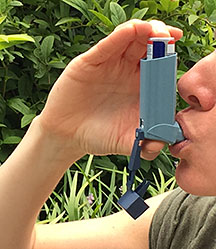 For allergic (atopic) asthma, treatment typically begins with attempts to isolate the allergen causing the attacks; the patient is then advised to make every effort to avoid the offending substance(s).
For allergic (atopic) asthma, treatment typically begins with attempts to isolate the allergen causing the attacks; the patient is then advised to make every effort to avoid the offending substance(s).
For both allergic and secondary asthma, various medications are used to relieve symptoms. The most common include:
- Anti-inflammatory medications. These drugs are used for routine maintenance of moderate to severe asthma. The most frequently prescribed are the anti-inflammatory steroids, which block the progression of bronchial inflammation and help prevent future flare-ups. To control an asthma attack, inhaled corticosteroids such as Azmacort, Beclovent, and Vanceril are most frequently used. Oral corticosteroids (prednisone, prednisolone, Medrol) can have dangerous side effects and are usually reserved for severe asthma cases and emergency situations.
- Bronchodilators (Ventolin, Alupent, Proventil, Metraprel). These drugs work by dilating (widening) the airways, which helps to alleviate acute attacks. prolonged use of these products makes them less effective over time when inflammatory swelling is present; although the medications dilate the bronchi, the swelling caused by the inflammation is not affected. This often leads people to use more of these drugs with less effect. Patients are cautioned to use bronchodilators only when absolutely necessary.
- Expectorants. These medications help thin the mucus, which allows the patient to cough up any phlegm that might be obstructing the airways. Guaituss, Anti- Tuss, and Robitussin are popular over-the-counter varieties; Fenesin, Sinumist, and Humibid are prescription expectorants. Although expectorants are relatively harmless, beware of added ingredients such as antihistamines, which can actually thicken the mucus and aggravate the asthmatic condition.
- Theophylline. This potent stimulant is used to dilate bronchial passages. Side effects include fast or racing heart rate, elevated blood sugar levels, and nausea and vomiting. Medications that include theophylline are Bronkodyl, Dilor, Theo-Dur, and Theolair.
- Cromolyn and Tilade. These drugs act like Teflon to coat the bronchial mucosa, preventing allergens from attaching to the mast cells and instigating an asthmatic episode. Although these drugs can induce coughing, they are usually well tolerated and are considered the drugs of choice for exercise-induced asthma (EIA).
Other strategies are commonly recommended by Western medicine as well:
- Special air filters help remove dust, pollen, and other airborne allergens.
- Patients are often advised to avoid overexcitement and excess stress.
- Psychotherapy can sometimes help the patient resolve emotional problems that may be causative or contributory.
TRADITIONAL CHINESE INTERPRETATION

Gingko Biloba
When an asthma attack occurs, you experience difficulty exhaling the air trapped in your Lungs, a process that in traditional Chinese medicine is described as “the Kidney chi unable to grasp the Lung chi. ” Asthma is considered a deficiency of both Lung and Kidney chi; the weakened Kidney chi doesn’t have the strength to grab hold of the Lung chi, and the energy circulates without being replenished, eventually stagnating in the Lungs. In allergic asthmatic reactions the Chinese would look to an imbalance in Liver chi.
Wind is considered the most important pathogenic force in asthma. When the Lung and Kidney chi are deficient, Wind penetrates the surface through the Wind points on the neck and shoulders, causing colds, chills, fevers, migrating aches and pains, and sinusitis. If the weakened wei chi is unable to evict the intruder, Wind eventually penetrates deeper, infiltrating the Lungs and causing the wheezing, difficult breathing, coughing, fear, and panic associated with asthma.
According to traditional Chinese medicine, the emotions play an extremely important role in every disease and disorder, and the complex interconnections between emotional and physical factors are given careful attention. Metal energy, which is closely aligned with the emotion of grief, governs the Lungs, while the Kidneys (Water) are associated with Fear and the Liver (Wood) with anger. Extreme grief, fear, or anger is considered injurious to these vital organs, and treatment will always involve helping patients identify the underlying source of their emotional distress and discover ways to express their emotions, thus dissipating their negative effects.
Diet
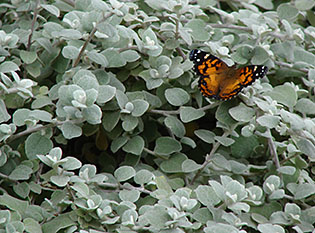
Licorice
Foods that restore the smooth and even flow of energy in the Lung, Kidney, and Liver are highly recommended. Because half of all asthma cases are allergy-induced, the first and most important dietary change you can make is to eliminate potential food allergens from your diet. Since dairy products (milk, butter, cheese, yogurt, cottage cheese, and ice cream), eggs, and wheat products (bread, cereal, gravies, crackers, cookies) are the most common food allergens, eliminate these foods first. Other common food allergens include egg products, chocolate, citrus fruits and juices (particularly oranges and orange juice), soy products, peanuts, and other nuts, shellfish, and yeast.
One of the best methods of determining food sensitivities is the Elimination Provocation Diet, in which the patient eliminates the suspected food allergen for at least five days and then reintroduces the food back into his diet for three days. Blood tests such as the Radio Allergo Sorbent Test (RAST) can also detect immune reactions to food by measuring IgG or IgE antibodies to specific food allergens. If you suspect that you might have food allergies or sensitivities, ask your health care provider about these tests.
Even if you aren’t allergic to dairy products, they should be restricted because they cause mucus to build up in the upper respiratory system, aggravating and intensifying the distressing symptoms of asthma. Drink water instead of milk, and avoid cheese, butter, yogurt, cream, and ice cream whenever possible.
Be sure to drink a minimum of eight to ten 8-ounce glasses of fresh, filtered water every day. Water will help thin the mucus and ease its elimination from the body.
Onions are a favorite folk remedy for asthma, which makes sense because onions contain various compounds that relax the bronchial muscles and help prevent spasms. Some naturopathic physicians suggest drinking onion juice; if you find that particular remedy hard to stomach, simply add extra onions to your sandwiches, salads, soups, and stews.
Exercise
Exercise is essential to strengthen the Lungs and Kidneys; however, the specific amount of exercise you can tolerate is highly individual. As always, moderation is the key. When asthma symptoms are not bothering you, feel free to exercise as much and as often as you want. Aerobic exercises that require you to breathe deeply and regularly are particularly beneficial for the Lungs. Brisk walking, swimming (unless chlorine irritates your skin or lungs), and bicycling are all excellent choices. Yoga and tai chi exercises will also increase your energy and resilience. In general, try to exercise for twenty to thirty minutes every day.
During asthma attacks, avoid exercise and take time to rest and relax.
Environmental Strategies

Lobelia
If you suffer from asthma, creating a safe indoor environment free from chemical irritants should be one of your first priorities. Choose house-cleaning products that are natural and unperfumed. If you use air conditioning, have the vents cleaned and disinfected at least once a year. Carpets are great hiding places for all sorts of irritants such as molds, dust mites, pollen, and other microorganisms, so have them professionally cleaned on a yearly basis. Be sure to ask the carpet cleaners if they can steam-clean without using perfumes or toxic dry-cleaning chemicals. Green plants continually absorb toxins and release fresh oxygen into the air, so place plants in strategic areas of your house.
Whenever you use toxic chemicals, either at home or on the job, wear an OSHA-approved mask, which is guaranteed by the federal government to filter out various pathogens. If your asthma is allergy-induced, you might consider purchasing an air cleaner or purifier. The best brands combine an activated carbon filtration system with an air ionizer. Bionaire makes an excellent model, which is available at finer department and electronics stores. Whatever brand you buy, make sure it is OSHA-approved.
Nutritional Supplements
The following eight vitamins and minerals will help you prevent and/or treat asthma. While this is a fairly hefty number of supplements to take on a daily basis, rest assured that they are all safe, even in large doses, and can be used for long periods of time with no ill effects. Once your symptoms are under control, you can gradually cut back and return to maintenance levels.
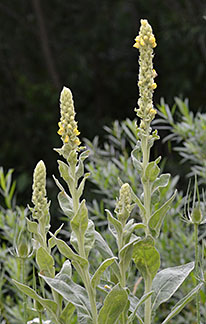
Mullein
Children over age fourteen can take the supplements recommended, while children between ages five and thirteen should take half the recommended dosages. For children under five years of age, it’s best to consult with a qualified professional before administering nutritional supplements.
- Vitamin C: Vitamin C stimulates immune activity and acts as a natural antihistamine to relieve sneezing, wheezing, and coughing. If your asthma attacks are allergy-induced, take 2,000 mg. every two hours, up to 20 grams daily, during allergy season. To determine the optimal dose for vitamin C for you, increase your dosage until you experience loose stools or diarrhea; then cut back approximately ten percent or until symptoms subside. For atopic (nonallergic) asthma, take 2,000-4,000 mg. (2-4 grams) daily.
- Vitamin A or beta-carotene: A powerful antioxidant and immune stimulant, vitamin A helps fortify the body’s defense system against infectious organisms. Because vitamin A is fat soluble, it can accumulate in the body’s tissues; to avoid any danger of toxicity, we recommend taking 25,000-50,000 J.D. of beta-carotene, which is converted in the intestines into vitamin A.
- Vitamin E: Vitamin E is a powerful antioxidant with impressive healing effects on tissues and mucous membranes. Take 400-800 J.D. daily.
- Selenium: Selenium works synergistically with vitamin E to multiply its protective effects. Take 200 mcg. daily with vitamin E. Because vitamin C can hinder the absorption of selenium, you might want to take these vitamins at different times. Caution: Selenium can be toxic in large doses; do not exceed 600 mcg. unless you are under professional supervision.
- Magnesium: Magnesium possesses both antihistamine actions (reducing the symptoms of stuffed-up or runny nose, itching or watery eyes, sneezing, and coughing) and bronchodilating effects (promoting the opening of the respiratory airways). It has been used successfully in asthma treatment since the 1930S. There are two additional reasons to use magnesium: (1) Many commonly used asthma drugs leach magnesium from the cells lining the airways, creating a deficiency that can contribute to bronchial constriction; and (2) the meats, soft drinks, and food additives and preservatives that make up the typical Western diet generate large amounts of dietary phosphorus, which binds to magnesium and makes it unavailable for digestion and distribution to body tissues. Take 500-1,000 mg. of magnesium daily; use the higher amount if you are taking asthma medications. Magnesium citrate, aspartate, or gluconate are easier to absorb and better tolerated than magnesium oxide. Look for chelated forms of magnesium.
- Omega-3 fatty acids: These effective anti-inflammatory agents work to prevent and treat asthma; they also work to thin the blood, lower blood pressure and triglycerides, raise high-density lipoproteins (good cholesterol), and protect you against heart attacks and strokes. Found naturally in deep sea fish such as salmon, mackerel, herring, anchovies, canned sardines, and tuna, omega-3’s are also available in fish oil capsules, sometimes called EPA (eicosapentaenoic acid, the active ingredient in fish oil) capsules. If you suffer from dry skin, acne, eczema, dry mouth, excessive thirst, hair loss, and! or cracked heels or nails, you may have a deficiency of omega-3 fatty acids. Take 1,500 mg. daily for three or four weeks; then cut back to 500 mg. daily. If you can’t tolerate fish oil because of allergies or the fishy aftertaste, flaxseed oil is a good substitute; take one tablespoon daily. Because flaxseed oil can quickly go rancid, be sure to refrigerate it and store it in an amber, light-protective container.
- Vitamin B complex: This complex of vitamins helps your body cope more effectively with stress, which can play a major role in the frequency and severity of asthma attacks. Take a B-50 or B-lOO complex daily.
- Pycnogenol (proanthocyanidin): This powerful antioxidant, with anti-inflammatory, immune-enhancing, and antihistamine effects, is derived from the seeds of grapes or the bark of pine trees. Fifty times more powerful than vitamin E and twenty times more potent than vitamin C, Pycnogenol has been used in Europe for decades with promising results in the treatment of asthma and hay fever. Extensive research is now being conducted on this herb’s healing potential for other inflammatory diseases, including arthritis and lupus. Because grape seed is the more potent source of pycnogenol, buy supplements derived from grape seed or a combination of pine bark and grape seed. Take 50-100 mg. daily.
Chinese Patent Remedies
-
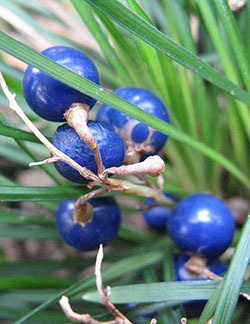
Ophiopogon
Ping Chuan Pills (“Relieve Asthma Pills”): This remedy has been used with great success to prevent chronic asthma and chronic bronchitis, for it supports Kidney and Lung chi, breaks up phlegm, and stops coughing attacks. Armeniaca seed reigns as the Emperor herb and is attended by codonopsis root, licorice root, eleagnus fruit, morus root-bark, ficus leaf, citrus peel, cynanchum root, gecko lizard, and cordyceps fungus. Take ten pills three times daily, reducing to ten pills twice daily as symptoms resolve; after a few weeks of being symptom-free, gradually reduce the dosage until you stop completely.
- Su zi Jiang Qi Wan (“Perilla Seed Guiding Chi Downward Pills”): This effective tonic for preventing asthma helps “ground” the chi and bring it back to the Kidneys. The Emperor herb is perilla seeds, an effective expectorant traditionally used for asthma and chronic bronchitis; ten attending herbs (perilla fruit, pinellia root, magnolia bark, peucedanium root, citrus peel, aquilaria, dong quai, ginger, ziziphus fruit, and licorice root) support the Lungs, disperse mucus, and nurture the Kidney yang (fire). The formula comes in small bags; each bag contains eighteen grams. Take three grams (one sixth of a bag) three times daily; after a month or two, you can reduce the dosage to three grams daily. Caution: This formula contains herbs that tend to be warming; do not use it if you experience “hot” symptoms such as green mucus, fever, or a dry, irritated cough.
These Chinese patent remedies are gentle and can be safely combined with any of the following herbs.
If you need help choosing the most effective formula or combination of herbs for your symptoms or if the patient is a child, consult an experienced herbalist.
Herbal Allies
The following herbs can be used alone or combined in a single formula. Popular formulas available at health food stores offer different combinations of these herbs. You can also contact a qualified herbalist, who will mix up a formula tailored to your specific needs.
- Ephedra (Ephedra sinica): Ephedra, or ma huang, has been used for more than five thousand years to treat asthma, especially allergy-induced asthma. Western researchers extracted ephedra’s active ingredient, the alkaloid compound called ephedrine, and for many years this was the drug of choice for asthma. Ephedra should be used only under professional guidance, for in large amounts it can raise blood pressure, and long-term use in large doses can weaken adrenal function. Used in small amounts, however, ephedra doesn’t have the adrenaline-like side effects typically associated with ephedrine. Caution: In 2004 the FDA banned the sale of Ephedra-containing supplements in the USA, therefore none of the herbal formulations available on our store contain Ephedra or its alkaloids.
- Ophiopogon (Ophiopogon japonicus) is an anti-inflammatory herb which also moistens the mucous membranes of the body by stimulating the production of mucosal fluids. Moisturizing of the lungs reduces coughing.
- Licorice (Glycyrrhiza glabra): Licorice combines well with other herbs that support asthma to support the adrenal glands, lubricate the mucous membranes, and reduce inflammation and swelling. A gentle expectorant, it also helps to break up congested mucus. If you are taking corticosteroid drugs such as prednisone, be sure to take licorice, which supports and balances the adrenal glands, encouraging your body to produce natural steroids.
- Lobelia (Lobelia inflata): Also known as Indian tobacco, lobelia was used with great success by Native Americans to prevent asthma attacks. Today, herbalists use it in teas or tinctures to prevent a minor asthmatic episode from escalating into a full-fledged attack. Lobeline, the active ingredient in lobelia, is a powerful expectorant that relaxes the bronchioles and helps relieve spasms. In larger doses, however, lobeline can induce vomiting.
- Mullein (Verbascum thapsus): This gentle expectorant has been used by Native Americans and Europeans alike to soothe the entire respiratory system and heal various respiratory ailments.
- Ginkgo (Ginkgo biloba): This potent circulatory stimulant helps reduce inflammation and counteract allergic reactions. Dosage: If you purchase your herbs in a health food store (either in tincture form or, as dried herbs, in capsule or pill form), follow the dosage instructions on the label. Because herbs in dried form tend to lose their potency rather quickly, be sure to check the label for the expiration date.
Acupoints
-
Kidney 3 (“Great Mountain Stream”): This point supports and nourishes every aspect of Kidney function, including the yin, yang, chi, and jing, relieving conditions characterized by depleted energy such as asthma. Pressing or massaging this point can also work as a preventive for asthma. Location: Kidney 3 is located in the depression between the inside ankle bone and the Achilles tendon. Use your fingers to poke around in the valley until you feel the tender spot.
- Lung 9 (“Great Abyss”): This point is used to support the wei chi (immune energy) and activate and energize the Lung chi, helping to remedy asthma as well as colds, bronchitis, and sinus infections. A yin (Water)-supporting point, Lung 9 is also helpful for anxiety, heart palpitations, and general irritability. Location: Lung 9 is located on the crease on the palm side of the wrist in the depression at the base of the thumb, about half an inch in from the side of the wrist.
- Ding Chuan (“Benefit Asthma Point”): This “extraordinary” point-that is, a point with special powers not located on any particular meridian-is specifically used to prevent and treat asthma. Location: Find the prominent vertebra at the base of your neck (the seventh cervical vertebra) and move your fingers outward one half-inch on either side of the spinal column. Gently massage with your fingertips for one or two minutes; repeat several times a day.
Questions to Ask Yourself
 The Lungs are governed by Metal energy, which is closely aligned with the experience of grief. Practitioners of traditional Chinese medicine believe that extreme grief is damaging to the Lungs. Treatment often includes questions and exercises designed to help the patient express grief and thus dissipate its negative influence on the Lungs.
The Lungs are governed by Metal energy, which is closely aligned with the experience of grief. Practitioners of traditional Chinese medicine believe that extreme grief is damaging to the Lungs. Treatment often includes questions and exercises designed to help the patient express grief and thus dissipate its negative influence on the Lungs.
If you suffer from asthma, ask yourself:
- What have I lost that I continue to grieve over?
- How can I mourn my loss and then let it go?
- Why do I choke off my emotions?
- What do my symptoms prevent me from doing or accomplishing?
Fear is the emotion connected with the Kidneys. Excess fear can weaken the Kidneys to the point that they are unable to “grasp the Lung chi” and replenish it, which can lead to asthma. These questions may help you to identify the source and nature of your fears:
- How do my symptoms contribute to my fears of being closed in, choked off, and unable to breathe?
- Does my disease in some sense represent a fear of dying?
- What can I do to take control of my fear and my life?
- How can I expand my horizons, express my fears, and move beyond them?


